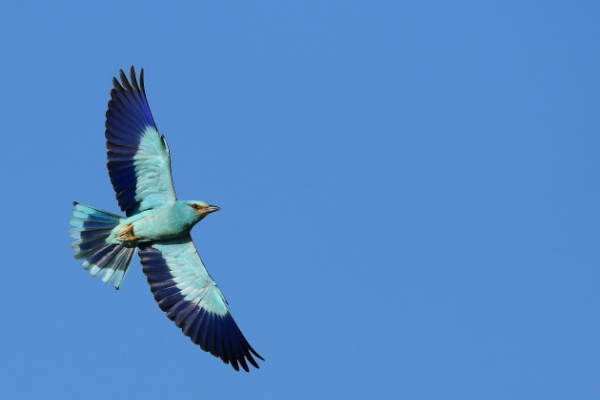Séminaire vendredi 18 novembre
 Conserving avian diversity in Sub-Saharan human-dominated landscapes
Conserving avian diversity in Sub-Saharan human-dominated landscapes
Gabriel Marcacci (Station ornithologique suisse de Sempach)
Vendredi 18 novembre 2022, 11 heures, amphi Billet
European populations of long-distance migratory birds are declining at a faster rate than those of short-distance migrants or resident species, and conservation efforts and policies to reverse these declines have so far failed to meet their targets. It is therefore urgent to devise conservation actions at a flyway scale (i.e., across countries and continents) to halt the ongoing decline. However, conserving migratory species is challenging because of their dependency on multiple sites (e.g., breeding areas, migratory routes including multiple stopover sites, and non-breeding/overwintering grounds), which are often geographically and politically distant. Until now, most studies have focused on the breeding season, while a full annual cycle perspective is needed. Indeed, many migratory species spend most of the year in their non-breeding grounds, for example in Sub-Saharan Africa, where anthropogenic pressures on ecosystems are rapidly increasing. With a fast population growth and widespread food insecurity, reconciling human activities with biodiversity conservation in Sub-Saharan Africa is a major challenge. However, there also exist opportunities to implement conservation measures that benefit both people and biodiversity. For instance, restoring habitats on degraded lands, besides providing habitats for biodiversity, can deliver multiple ecosystem services to local communities and can help fighting land desertification and store carbon in the context of climate change. This talk is a journey that explores these questions and ways to conserve avian communities in human-dominated landscapes from the Highlands of Ethiopia to the Sahel in Burkina Faso. It also aims to bring forward a discussion on how to rethink fair and equitable international collaborations to successfully implement evidence-based conservation measures and policy changes for flyway-scale impact.
- extrait:
- lien_externe:
- kc_data:
- a:8:{i:0;s:0:"";s:4:"mode";s:0:"";s:3:"css";s:0:"";s:9:"max_width";s:0:"";s:7:"classes";s:0:"";s:9:"thumbnail";s:0:"";s:9:"collapsed";s:0:"";s:9:"optimized";s:0:"";}
- kc_raw_content:
 Conserving avian diversity in Sub-Saharan human-dominated landscapes
Conserving avian diversity in Sub-Saharan human-dominated landscapesGabriel Marcacci (Station ornithologique suisse de Sempach)
Vendredi 18 novembre 2022, 11 heures, amphi Billet
European populations of long-distance migratory birds are declining at a faster rate than those of short-distance migrants or resident species, and conservation efforts and policies to reverse these declines have so far failed to meet their targets. It is therefore urgent to devise conservation actions at a flyway scale (i.e., across countries and continents) to halt the ongoing decline. However, conserving migratory species is challenging because of their dependency on multiple sites (e.g., breeding areas, migratory routes including multiple stopover sites, and non-breeding/overwintering grounds), which are often geographically and politically distant. Until now, most studies have focused on the breeding season, while a full annual cycle perspective is needed. Indeed, many migratory species spend most of the year in their non-breeding grounds, for example in Sub-Saharan Africa, where anthropogenic pressures on ecosystems are rapidly increasing. With a fast population growth and widespread food insecurity, reconciling human activities with biodiversity conservation in Sub-Saharan Africa is a major challenge. However, there also exist opportunities to implement conservation measures that benefit both people and biodiversity. For instance, restoring habitats on degraded lands, besides providing habitats for biodiversity, can deliver multiple ecosystem services to local communities and can help fighting land desertification and store carbon in the context of climate change. This talk is a journey that explores these questions and ways to conserve avian communities in human-dominated landscapes from the Highlands of Ethiopia to the Sahel in Burkina Faso. It also aims to bring forward a discussion on how to rethink fair and equitable international collaborations to successfully implement evidence-based conservation measures and policy changes for flyway-scale impact.
- titre:
- intervenant:
- date:
